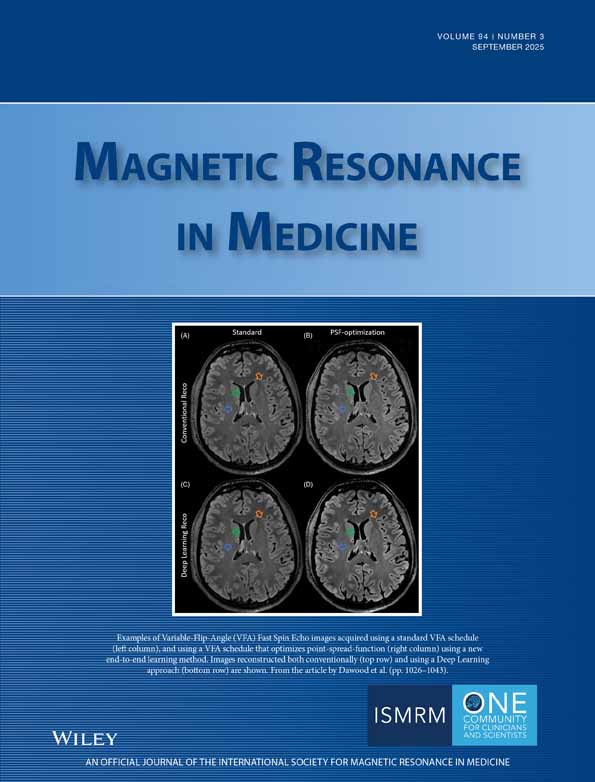Radiofrequency power deposition utilizing thermal imaging
Abstract
Wavelength effects influence radiofrequency (RF) power deposition distributions and limit magnetic resonance (MR) medical applications at very high magnetic fields. The power depositions in spherical saline gel phantoms were deduced from proton resonance shift thermal maps at both 1.5 T and 3.0 T over a range of conductivities. Phase differences before and after RF heating were measured for both a quadrature head coil and a circular surface coil. A long echo time (TE) pulse sequence with a 3D phase unwrap algorithm provided increased thermal sensitivity. The measured thermal maps agreed with a model of eddy-current heating by circularly polarized oscillating RF fields in a conducting dielectric sphere. At 3.0 T, thermal maps were acquired with a <0.32°C temperature rise at 4 W. Proton resonance shift thermal maps provided a measure of hot spots in very-high-field MR imaging (MRI), in which both the phase sensitivity and signal-to-noise ratio (SNR) were increased. The method provides a means of studying the heat distribution generated by RF coils excited by clinical pulse sequences. Magn Reson Med 51:1129–1137, 2004. © 2004 Wiley-Liss, Inc.




